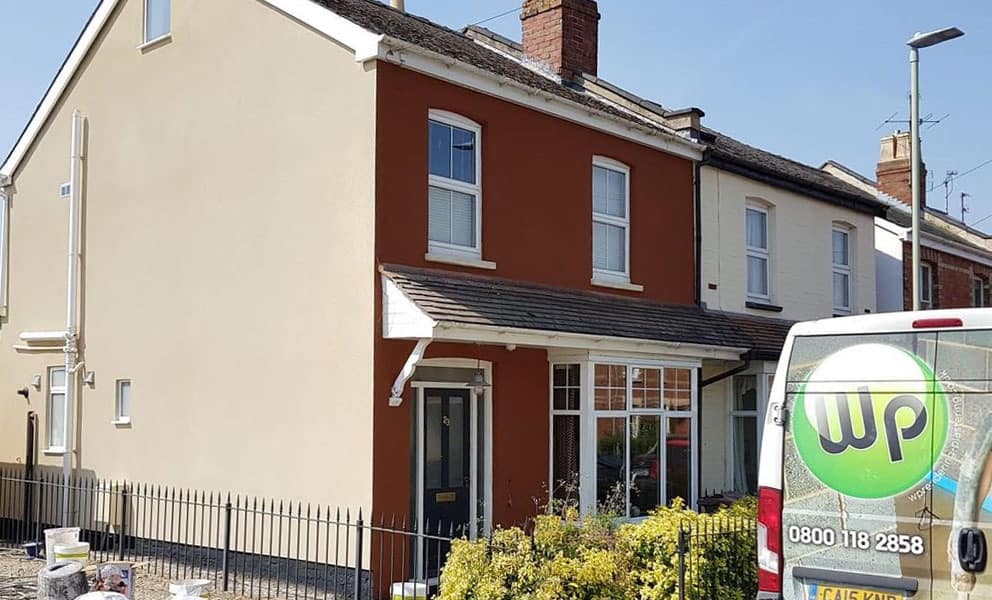
Call our team
01484 442420Find An Applicator
Menu
close

If you commit a planning breach, you may be forced to undo the work, which can be costly, time consuming and very frustrating. So, do you need planning permission to render your house?
In many cases, planning permission is not required to maintain, repair or replace the existing render on your house. This is classed as a permitted development, as long as the materials – in this case the render – have a similar appearance to those originally used on the house.
That means that you typically don’t need planning permission if your house already has render, and you’re using a similar colour. However, it also highlights a number of jobs where planning permission could be required:
While planning permission isn’t usually required to apply render, it is a bit of a grey area in truth. As a result, homeowners may want to apply for planning permission for total peace of mind. It’s also worth noting that substantial rendering work will need to comply with building regulations – including the need to insulate walls on the inside or outside as part of the job on many older properties.
Another exception to the permitted development outlined above comes for houses in Conservation Areas, National Parks or Areas of Outstanding National Beauty. According to the Planning Portal for England and Wales, property owners in these areas will need to apply for planning permission before cladding exterior walls with:
The reason for these strict regulations is to protect the distinctive look and historical importance of these special areas. Each material used for cladding, like stone, render or timber, can significantly affect the area's overall appearance and charm.
That's why local planning authorities are very careful in overseeing these changes. They want to make sure that any alterations to buildings match the existing style and historical context of the area.
So, if you own a home in a Conservation Area, National Park or Area of Outstanding Natural Beauty, it's crucial to get guidance and secure the right permissions before starting any work on your home’s exterior.
Failure to obtain planning permission usually results in a retrospective application. If a breach is found, that can lead to an enforcement notice, which means work will effectively need to be undone on your property.
That’s why it’s always better to be safe than sorry. If you suspect your rendering job falls outside the criteria of a permitted development, you should get in touch with your local authority for advice.
Most planning applications are decided within eight weeks, and something as simple as render is unlikely to cause any complications or delays. According to the online Fee Calculator, householder planning permission, defined as “an application for alteration to/extension of an existing dwelling”, has a fee of £206.

Photo credit: Huxtable Builders
The hassle of planning permission might be enough to put some people off the idea of rendering their homes. At this point, it’s important to remember the advantages of rendering and why it’s worth a bit of extra time and effort:
Rendering can transform the exterior of your house, giving it a fresh, modern look. It's an excellent way to revitalise an older property or to give your home a unique appearance.
A well-rendered house can increase the market value of your property. It’s a smart investment, as the improved kerb appeal can make your house more attractive to potential buyers.
Rendering provides an additional layer of protection against various weather conditions. It helps in preventing dampness and decay caused by rain, snow or humidity.
Certain types of render, especially those incorporating insulating materials, can improve the thermal efficiency of your home. This leads to reduced energy bills and a more comfortable living environment.
When it comes to the actual rendering process, selecting the right materials and techniques is vital for optimal results:
There are various types of render available, including traditional cement, lime and more modern acrylic or silicone-based renders. Each has its advantages and suitability depending on the building material and desired finish.
The choice of colour and texture plays a significant role in the final look of your home. While keeping the original appearance is safer for planning permissions, exploring different options can give your house a unique character.
A professional rendering job ensures longevity and effectiveness. Experienced applicators can advise on the best type of render for your property and execute the job with precision.
Whether it’s a permitted development or you’re applying for planning permission, you’ll want your render to be smooth, durable and long lasting. With Corksol’s exterior wall coating, that’s exactly what you’ll get.
Applying a thin layer of sprayed natural cork to a coat of render, our approved applicators can add water resistance, thermal and noise insulation, and anti-cracking flexibility to your house’s render. Our innovative SprayCork solution can also be used to repair cracked render with a simple overspray.
Want to find out more? Get in touch with us today on 01484 442420 or email [email protected]. Alternatively, you can arrange a quote directly with one of our approved applicators.
"*" indicates required fields